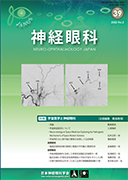Volume 39, Issue 2
Displaying 1-11 of 11 articles from this issue
- |<
- <
- 1
- >
- >|
Guest Articles
-
2022 Volume 39 Issue 2 Pages 107
Published: June 25, 2022
Released on J-STAGE: June 28, 2022
Download PDF (1380K) -
2022 Volume 39 Issue 2 Pages 108-112
Published: June 25, 2022
Released on J-STAGE: June 28, 2022
Download PDF (2115K) -
2022 Volume 39 Issue 2 Pages 113-125
Published: June 25, 2022
Released on J-STAGE: June 28, 2022
Download PDF (5850K) -
2022 Volume 39 Issue 2 Pages 126-129
Published: June 25, 2022
Released on J-STAGE: June 28, 2022
Download PDF (873K)
Original Articles
-
2022 Volume 39 Issue 2 Pages 130-136
Published: June 25, 2022
Released on J-STAGE: June 28, 2022
Download PDF (2951K)
Case Reports
-
2022 Volume 39 Issue 2 Pages 137-141
Published: June 25, 2022
Released on J-STAGE: June 28, 2022
Download PDF (2002K) -
2022 Volume 39 Issue 2 Pages 142-150
Published: June 25, 2022
Released on J-STAGE: June 28, 2022
Download PDF (4496K) -
2022 Volume 39 Issue 2 Pages 151-156
Published: June 25, 2022
Released on J-STAGE: June 28, 2022
Download PDF (2354K)
Neuro-Ophthalmology Series with Sourcebooks
-
2022 Volume 39 Issue 2 Pages 157-164
Published: June 25, 2022
Released on J-STAGE: June 28, 2022
Download PDF (9780K)
Impression
-
2022 Volume 39 Issue 2 Pages 165-182
Published: June 25, 2022
Released on J-STAGE: June 28, 2022
Download PDF (1113K)
-
2022 Volume 39 Issue 2 Pages 183
Published: June 25, 2022
Released on J-STAGE: June 28, 2022
Download PDF (557K)
- |<
- <
- 1
- >
- >|
